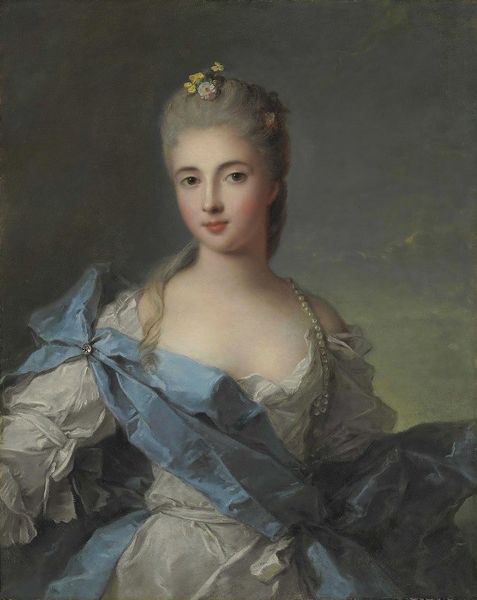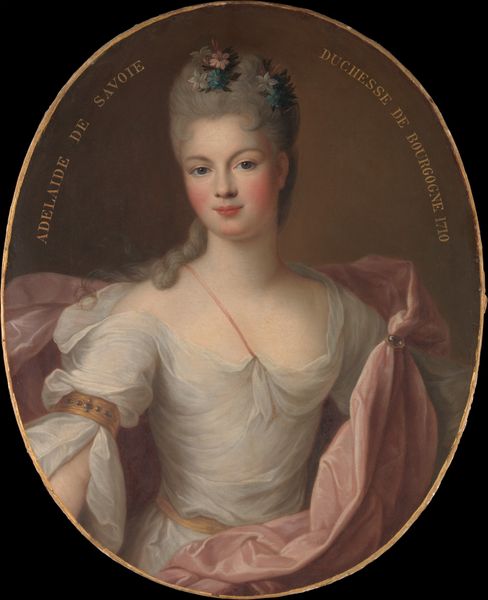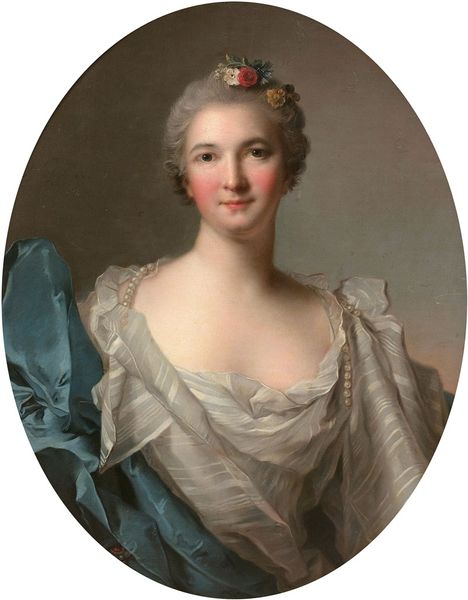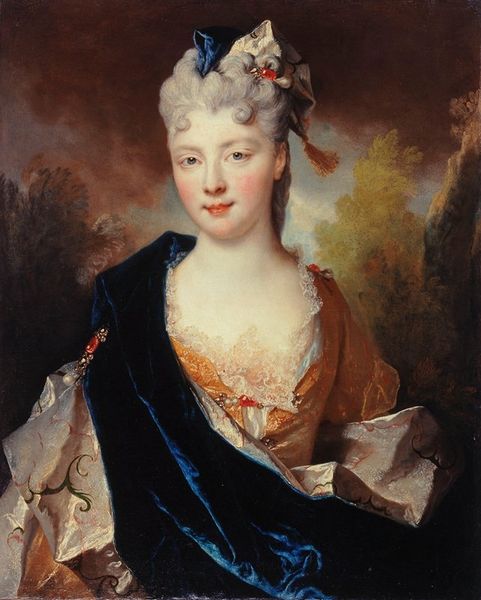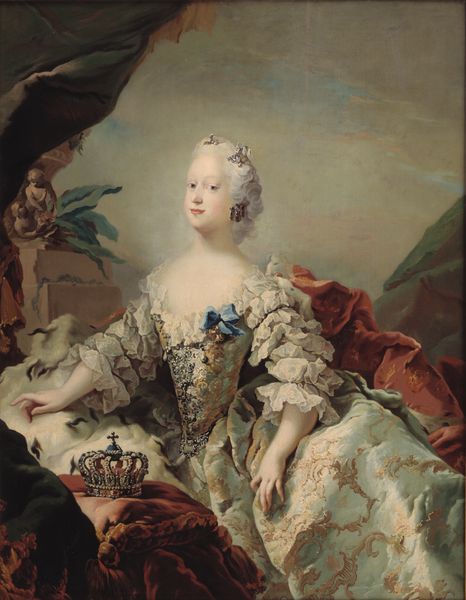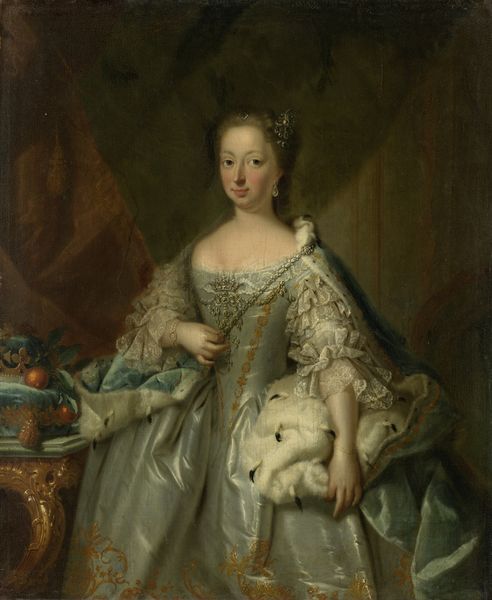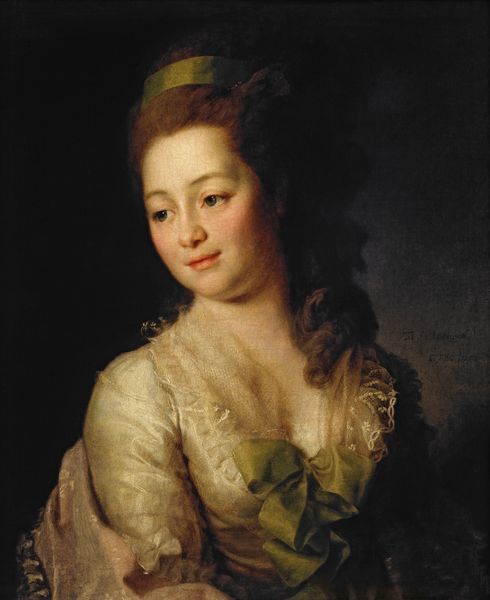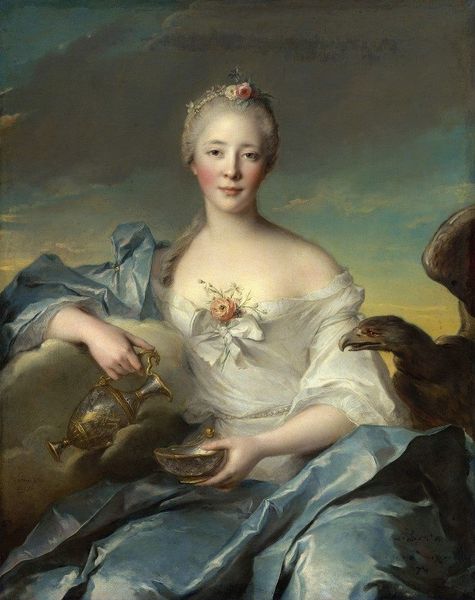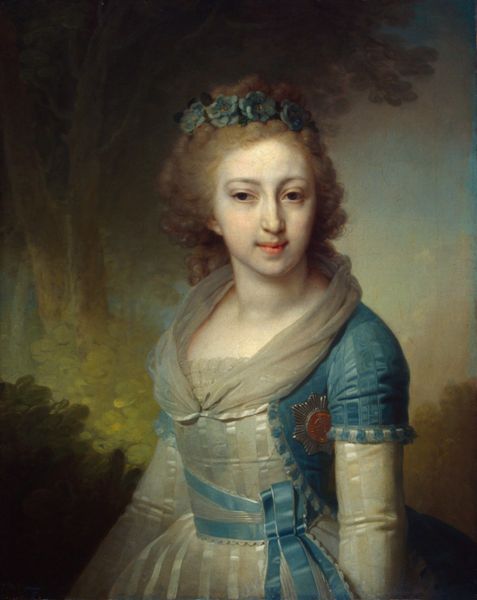
painting, oil-paint
#
portrait
#
allegory
#
painting
#
oil-paint
#
intimism
#
history-painting
#
academic-art
#
lady
#
portrait art
#
fine art portrait
#
rococo
Copyright: Public domain
Curator: Jean-Marc Nattier painted "Madame de La Porte" in 1754. The work, rendered in oil paint, offers an excellent example of French Rococo portraiture now housed here at the Art Gallery of New South Wales. Editor: Immediately, I'm struck by this sense of contained energy, almost like a simmering elegance ready to bubble over. And the colours—that almost artificial blush paired with the sharp, icy blue! What’s going on there? Curator: We can delve into that. The pastel hues, combined with the luxurious fabrics and delicate rendering of Madame de La Porte, position this work squarely within the Rococo aesthetic that privileged aristocratic ideals during the French Ancien Régime. The "artificial blush," as you've put it, echoes a common trope in portraiture, emphasizing beauty ideals and perhaps veiling deeper personal stories within courtly decorum. Considering gender and representation at that time, what does the passivity of this conventional pose suggest to you? Editor: Ah, the pose... She is constrained, yes, almost like she's been packaged for viewing. Yet there’s a slight upturn to her lips, almost a secret, knowing amusement. Like she knows she is performing for the gaze, and she is playing with it. Perhaps that icy blue offers a touch of defiance. The overall composition feels staged, but there's still life lurking within it all. That little flower on her head seems like a tiny rebellion against the formality. Do you read her dress as symbolic? Curator: Absolutely. Costume played a central role in communicating social status, power, and individual identity within 18th-century French society. Details like the luxurious fabrics, intricate gold embroidery, and the elegant cut of her gown reflect Madame de La Porte's privileged position. It situates her within the circuits of power during a pre-revolutionary period increasingly marked by societal disparity. Her apparel provides crucial material evidence when assessing that specific political, social, and aesthetic climate. Editor: So, reading beyond the surface reveals layers of both complicity and quiet subversion. That era just before the storm, all that hidden tension… it makes you wonder what was truly brewing behind that rosy blush and silk ribbons. Curator: Indeed. We see, beyond aesthetic beauty, encoded elements about women, power, and social upheaval. Editor: It does, and, I leave intrigued by what it obscures, that tension keeps the painting very much alive to me.
Comments
No comments
Be the first to comment and join the conversation on the ultimate creative platform.
